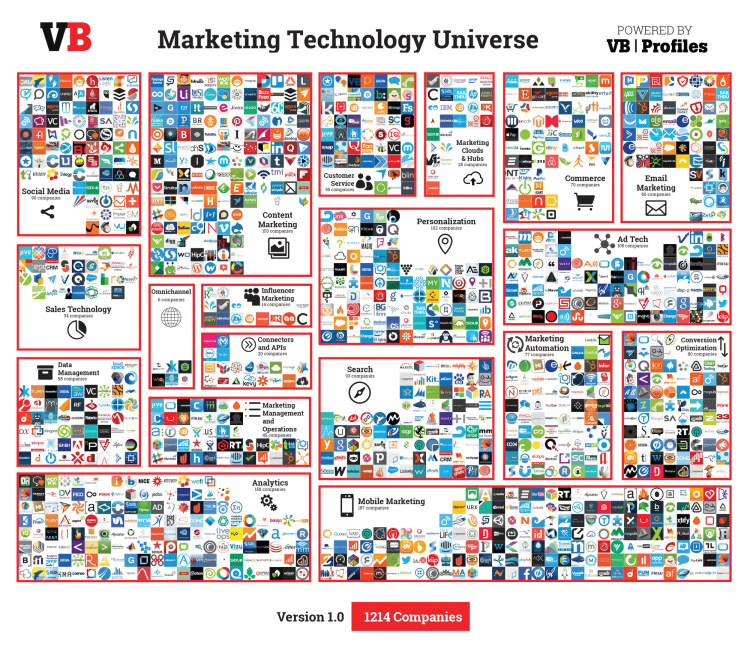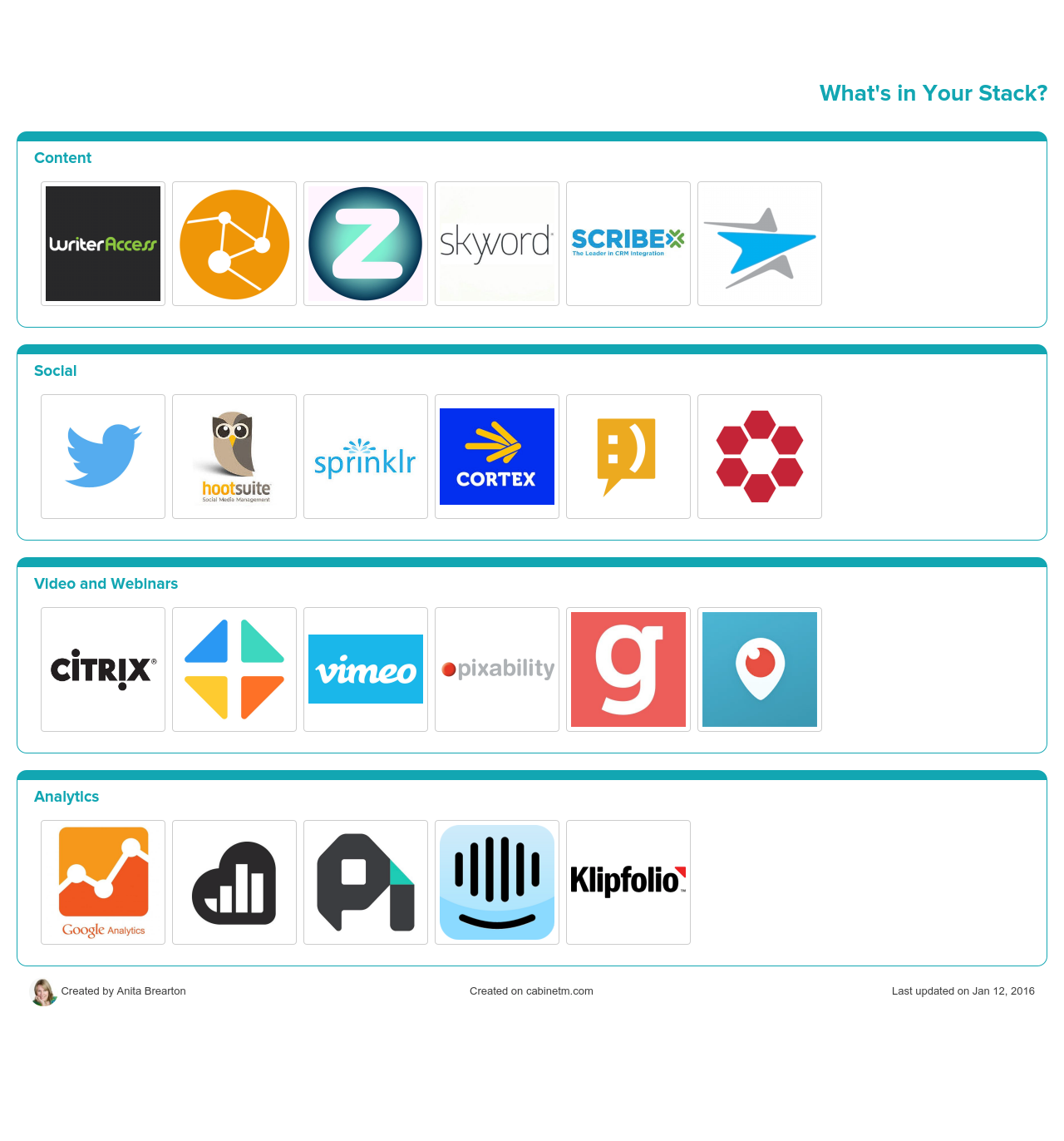Marketing technology continues to grow at a rapid pace. It is more fragmented than ever, and the number of available solutions has seen year-on-year triple-digit growth for half a decade.
And that’s a problem for everyone involved.
Keeping track of the tools, processes, and systems that are in use within your company is challenging enough, let alone taking an industry-wide view of martech.
Today, CabinetM — a martech directory, marketplace, and collaboration network — has announced MyStacks, a platform that lets marketers and agencies create, share, and collaborate around marketing technology stacks.
In other words, it gives you a chance to understand your martech fingerprint and offers an opportunity to see how your ecosystem stacks up against your peers’ (pun intended).
How does it work?
CabinetM has over 4,500 products in its marketing technology directory, covering more than 100 categories of martech product. Simply put, you search for the products you use and add them to your stack. Stacks can be broken up into logical sections, such as social, content, or email marketing. You decide how to label those parts, which means you can label them according to what the tool will do for you, what department it is for, or the location with which it aligns.
Any tool that can help organize marketing technology is welcome, especially in a world where 92 percent of marketers at small to medium-sized companies use up to seven separate marketing products per day. According to Anita Brearton, founder and CEO at CabinetM, the reality of a company needing multiple, disparate marketing tools to achieve its goals is not going away.
“Not only do we think this is sustainable, but we believe that seven tools a day, in many cases, will end up being the conservative case,” Brearton told me. “With marketing now directly in the path to revenue and responsible for customer lifetime value on top of the traditional branding and awareness functions, the number of specialist tools used across the marketing spectrum will continue to grow, as companies work to better engage with prospects and customers in a very personal way.”
That issue is exacerbated by hiring specialist marketers, such as the oft-mentioned “growth hacker,” who typically brings their own set of tools and processes. Brearton gave me an example close to home.
“If we look at the social media layer of CabinetM’s own marketing stack, we currently leverage three social platforms (Twitter, LinkedIn, and Facebook), three tools to help with content creation (Canva, Curata, and Hashtagify) and two tools to manage and measure our activity (Hootsuite and ManageFlitter),” Brearton said. “As we expand our social presence, we’ll add additional platforms and tools.”
MyStacks allows its users to share their martech stacks with the community, a feature that helps the platform to feel like a “Product Hunt for martech ecosystems.” While that feature may appeal to most users, those who are earlier in their career — or are moving to a new, uncharted function — stand to really benefit from understanding how others have built their stacks.
“Marketing is not a ‘one size fits all’ function; programs, positioning, and strategies vary greatly company to company and industry to industry,” Brearton said. “One thing that is becoming increasingly clear is that the generic title of ‘digital marketer’ is becoming meaningless; there are far too many tools in play for anyone to be an expert in everything. We expect to see digital marketers begin to choose very specific areas of specialization, and the shape of marketing departments will evolve to reflect this.”
MyStacks is free to use for both marketers and martech vendors. CabinetM expects to introduce premium features for the tool in the future, which will be in addition to the paid options currently available within its martech directory.
“Over time, we anticipate adding additional team collaboration features for marketers at a modest monthly per user fee,” Brearton said. “Right now, our only ‘premium’ offerings are for martech vendors who want to increase their visibility on the CabinetM platform by enhancing their profiles and contributing educational sponsored content.”
Those team collaboration features provide an intrinsic benefit to larger organizations, which often have multiple solutions that perform the same task across different, siloed departments or locations.
“The good news about siloed marketing departments is that there are lots of hands to test and try new products,” Brearton said. “The bad news is that tool selection, performance information, and lessons learned are frequently not shared across departments. More importantly, companies miss opportunities for cost savings, work efficiency, and the ability to leverage expertise as well as integrate programs across business units by not collaborating on the selection and implementation of core platforms.”
How can larger companies guard against those problems?
“In an enterprise environment where teams are siloed by function or geography, we believe the right strategy is to mandate a core set of tools that everyone uses — the ‘core stack’ — and then allow individual teams to add complementary tools to their own stacks that make sense for their objectives,” Brearton said. “In an ideal world, there would be a common enterprise-level stack and a variety of specialist stacks that teams would routinely share with one another so that everyone benefits from lessons learned.”
MyStacks is available from today via the CabinetM website.
VentureBeat's mission is to be a digital town square for technical decision-makers to gain knowledge about transformative enterprise technology and transact. Learn More


